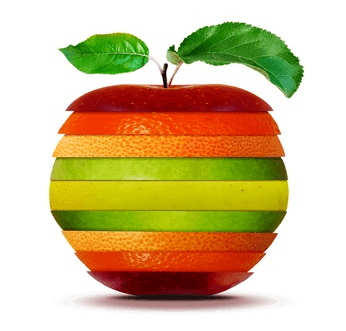
In a nutshell
Key sources:



Rose Hip



guava



kale



broccoli



citrus fruits
Essential for:



collagen production



blood vessels



skin



gums and teeth



bones and ligaments



intervertebral discs



immune system



protection from free radicals
Vitamin C
Vitamin C is a water-soluble nutrient that is not made or stored in the human body, so it must be obtained through the diet daily. This essential nutrient is also known by other names- ascorbate or ascorbic acid.
Ascorbic acid benefits
Ascorbic acid is crucial for the production of a protein called collagen. Collagen is used by the body for growth and connective tissue repair of blood vessels, intervertebral discs, tendons, ligaments, bone, cartilage, teeth, and skin. There are many other benefits of Vitamin C. As an antioxidant, this vitamin helps to prevent damage and oxidative stress caused by free radicals that attack cells in the body. Ascorbic acid is also crucial for the immune system, helping to reduce the severity and duration of some infections while promoting the healing of damaged tissues. This nutrient has antihistamine properties- it means that this nutrient can help reduce the allergic reaction of the body.
Vitamin C deficiency
Vitamin C overdose
Vitamin C overdose. A tolerable upper intake level often referred to as UL, has been set for this nutrient at 2000 mg per day. While overdose is unlikely from natural food sources, it is possible through the use of supplements. Overdose of this vitamin may result in gastrointestinal disturbances such as gas, nausea, and diarrhea. Kidney stones may also occur as a result of excess consumption of ascorbic acid. Taking high doses over a long period of time may result in the development of scurvy if the high doses are stopped abruptly. This is because the body attempts to release excess amounts of this vitamin through urine. When a high vitamin dose is excreted, the body still releases the same amount until it can adjust to the new lower levels. Finally, the body can release too much of this nutrient during this time and result in deficiency and related symptoms.
Daily Recommended Intake
Daily Recommended Intake. The daily recommended intake for this nutrient varies by age group. Infants from 0 - 12 months need 40 - 50 mg every day. This requirement drops after the first year, with those ages 1 - 8 only needing from 15 - 25 mg a day. Children who are 9 - 13 years old should get 45 mg a day. Teenage girls need 65 mg a day while teenage boys need a bit more at 75 mg. Adult females should aim for 75 mg, while adult males need about 90 mg of this nutrient each day. Pregnant women should get 80 - 85 mg, and breastfeeding women should try to get 115 - 120 mg each day.
Sources of vitamin C
While citrus fruits are the most commonly known natural sources of this vitamin, there are many other fruits and vegetables that contain much more of this nutrient. Rich by vitamin C sources include rose hips, papaya, broccoli, hot and bell peppers, pineapple, strawberries, and many other fruits and vegetables. Eating a healthy, balanced diet with a variety of fresh produce and meat products can ensure adequate intake of this essential vitamin.
The following foods have high amounts of vitamin C:
• Rose Hip (100g) - 426 mg;
• Guavas (100g)- 228 mg;
• Litchis (dried) (100g) - 183 mg;
• Lemon peel (100g) -127 mg;
• Kale (100g) - 120 mg;
• Kiwifruit (100g) 105 mg;
• Broccoli (100g) - 89 mg;
• Papayas (100g) - 61 mg;
• Oranges (without peel) (100g) - 53mg;
• Lemons (without peel) (100g) - 53 mg;
Other important sources of Vitamin C:
• Peas, pumpkin, soybeans, peppers, turnip, potatoes;
• Pummelo, strawberries, pineapple, apricot, plums;
• Garlic, coriander, parsley, saffron, rosemary;
• Lamb, beef, pork, chicken liver;
• Fish.
